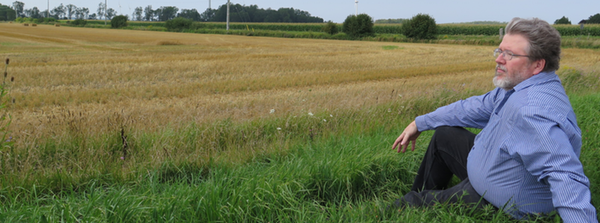Next Year’s Country, Last Year’s Dreams (Chapter 4: The Plains Series)
“For whatever reason, hearing and seeing snow geese that afternoon triggered something. Perhaps I recognized in that sighting something iconic about prairie life. It felt like I was granted a signal that I was now at home here, in a place to which I had migrated: a powerful, troubled, vulnerable place. A place from which, at some point, I might—or might not—return some day to the landscape of my childhood.”—William Ramp
Small Things Recollected
By William Ramp

LETHBRIDGE Alberta, Canada—(Weekly Hubris)—3/2/2015—As the featured contributor at Weekly Hubris this week, I’m taking a sobering look at some of the forces driving the economic and environmental crises that beset the vast interior plains of North America.
They’ve been called the breadbasket for the world, and they’re home to one of the biggest oil booms in recent American history. But all is far from well here, and damage has been accumulating for some time. At the same time, I also want to reflect on what it means to write out of heartsickness or a sense of displacement, or from a commitment to past and future? What does it mean to pay attention, and to hope, in troubled times?
Last spring, I began my stint as a rookie WH columnist with a reflective essay which worked outward from a minor event that occurred in a small, flat space—a parking lot. I had no sense that my next column, on shrinking populations of grassland songbirds, would put me in front of a far larger canvas, nor that I would—with misplaced beginner’s confidence—turn a quick sketch into a panoramic series about a region as vast and varied in time as it is in space.
Now, I’m bringing that series into the present and toward an extended and provisional close; one without a Hollywood resolution. I’ll highlight a few of the things that drew me to a landscape that is exterior and interior, real and mythical, overwhelming . . . and fragile. I’ll also gauge the narrative arc I’ve traced, and some points at which forces difficult to compass intrude.
Last November, for the first time during my 20-year sojourn in southwestern Alberta, I saw and heard my first flock of migrating snow geese.
Canada geese—once at risk, now common—are an everyday presence here. Many of them test the boundaries of the word “migration,” tempted to stay in northern climes by the grain left in wheat fields, spilled along railway tracks, and scattered outside elevators and mills.
On this particular late afternoon, I was arrested by calls I knew to be those of geese. But the notes were unfamiliar; higher, shorter, sharper. I looked up to see a vast flock of white birds catching the last of the sun, their black wingtips providing stark contrast. They did not wheel and separate as their locally-acclimatized cousins did, but kept straight on, heading south-south-east until a haze of ice crystals obscured them.
Why should it have taken me two decades under Alberta skies to notice them? I can’t say exactly. Perhaps I spend too much time looking at the ground while visualizing the celestial in my head. Nor can I say why that experience stuck with me. Some things are as they are.
I’m native to a far-eastern corner of the North American interior plains, resident now at their far western edge. But though I’ve lived close to the Alberta foothills for years, I’ve never felt particularly “western.” My heart is still claimed by a small patch of fast-urbanizing ground in southwestern Ontario, bounded by the Niagara and Thames rivers and the Lake Erie shore.
For whatever reason, hearing and seeing snow geese that afternoon triggered something. Perhaps I recognized in that sighting something iconic about prairie life. It felt like I was granted a signal that I was now at home here, in a place to which I had migrated: a powerful, troubled, vulnerable place, a place from which, at some point, I might—or might not—return some day to the landscape of my childhood.
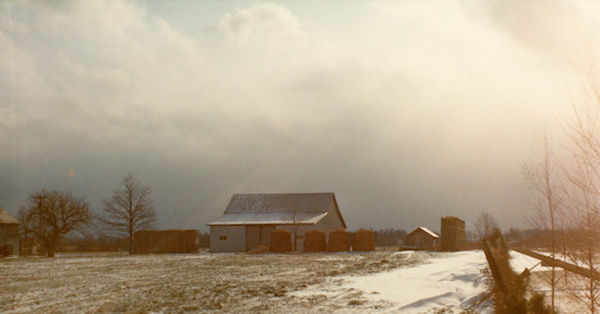
When I was young, I was fascinated by (if fearful of) heights, and liked to imagine my natal landscape as a hilly one. It was only later, when I saw, first, the Shield country of northern Ontario, the Appalachians and, later, the Scottish border fells and western highlands, that I appreciated what real hills looked like. My hill-fixation was satisfied on the crest of a long Gloucestershire ridge where, emerging from a claustrophobic exploration of a Neolithic underground barrow, I watched ravens madly tumble and roll in an updraft forced over the slope from the wide, wide vale below.
Much later still, a half-day’s drive from a first sighting of The Rockies to the pass which gave entry to them silenced all my previous experience of vertical topography. I still cannot imagine the Himalayas.
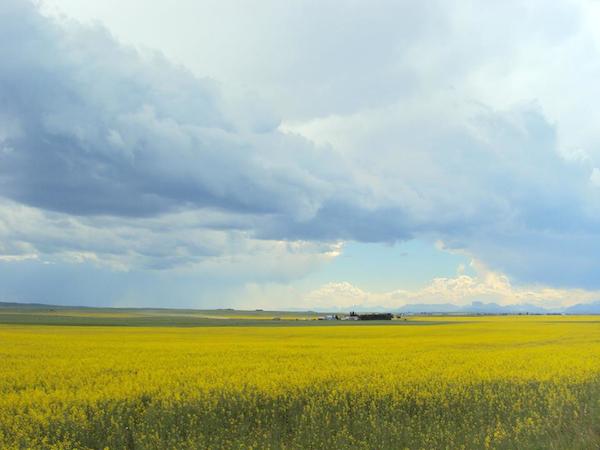
It’s now clear to me that what I’d done as a child was to imagine greater hills to compensate for the relative flatness of my locality, upping the ante of the contrast provided by the modest creek-cut valleys along the Lake Erie shore, or even by the nearby Niagara escarpment. I imagine my ancestors may have done much the same in calling a portion of the latter a “mountain.” The topography of our lakeside farm provided plenty of opportunity to tip a tractor, with lethal results, but little for sublimity.
I was, in short, demonstrating by denial that I was, from the beginning, “of the plains.” That denial was perhaps not far removed from the mentality of Tom Sukanen, a heartbroken Saskatchewan farmer who single-handedly built himself a ship, miles from navigable water, to carry him back, alone, to his coastal birthplace in the Finnish archipelago.
Tom and his beloved Sontiainen may have been singular oddities, but they were also representative. For all the talk of settlers and homesteading, the plains have long been avenues of restless movement: of animals, birds, wind, water, individuals, and peoples. Moving on, another place, a new start, the great trek: all these were and are part of the mythology of the plains. And there’s a temporal restlessness too: the informal name accorded the province of Saskatchewan by its hardy settlers was “Next Year Country” and, in southern Alberta, a common saying is, “If you don’t like the weather, wait a few hours.”
In my childhood escapism, I could not have imagined the visual power of mountains. But, from the edge of the plains, I also could not sense their own magnetic enormity, and imagined them to start somewhere else far away. Short jaunts down the Erie shore did not impart recognition; only crossing four Canadian provinces by land from east to west and back again finally did. These crossings also disabused me of the notion that “plains” meant monotony and lack; a mere absence of contrastive elevation. The great sweep of the continental interior encompasses and accentuates an astounding variety of landscapes, natural and cultural.
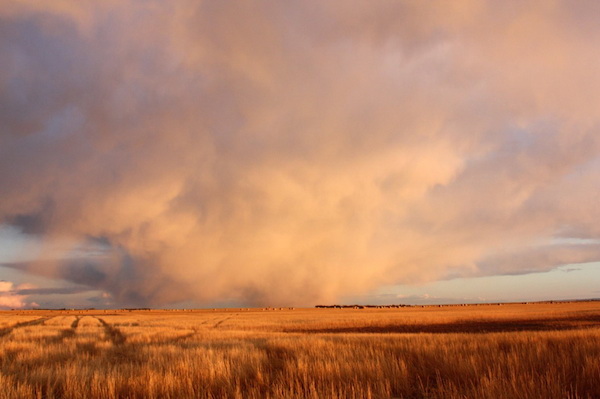
In previous columns, I hope to have given some sense of the majesty of that interior, the depth of its history, and the dreams, visions, and resilience of its people. But I’ve also woven some darker threads through these columns. If the weave has a pattern, it is also at times discordant, even contradictory.
My theme has been the paradoxical power and fragility of the plains, and of those who inhabit and dream them. By “The Plains,” I mean more than an expanse of land. Rivers, sloughs, hills, swales, lakes, sky and the ever-present wind shape an intricate and infinitely-varied set of worlds within worlds. Local ecosystems nest within and blur the boundaries of larger divisions: shortgrass and tallgrass prairie, aspen parkland, sagebrush country. Roads, railways, pipelines and boundary fences divide and bind the land; towns and cities punctuate and stain it. Brought together in the mind and emotions, these produce identity and paradox: a gestalt both singular and complex, states of mind at once unified and contradictory, individual and collective purposes that are potent and divided. Fragility is the reverse image of threat and potency.
These divisions reflect and are reflected in the modern history of the continental interior. European incursions into them were driven by dreams of wealth and vigilance against competition and the unknown. Fur traders were some of the earliest visitors to the northwestern plains. Others sought a way through them to Asia. Commercial rivalries and trespass easily erupted into gunfire. The displacement of those who stood in the way of realizable value was brutal from the beginning. Infectious disease paved a way for that displacement: we may never know how many thousands, or millions of indigenous people died of smallpox and other plagues before ever seeing a European.
But greed and gain were not the only factors that reworked the face of the plains. Geopolitics played its role too. The Spanish Empire expanded northward through the plains even as it began to crumble.
A few miles south of where I write, and still within Canada, a flag marks its northern extent. New Spain succumbed to newer predators, as British and French fought over, captured, and ceded vast tracts of land they poorly understood. The United States, despite an official mythology of nation-building-by-its-own-bootstraps, was made and refined in the cauldron of the Seven Year’s War, the French Revolution, and the Napoleonic conflicts. The Louisiana Purchase, which made the US a truly continental power and secured for it the Great Plains, was made possible by a French strategy of retrenchment in the face of the British and their allied powers.
As long as the peoples native to the North American continent made useful allies in these rivalries, they were able to exercise real power—though not always on their own behalf nor to their own benefit. But the continental expansion of the United States, and Britain’s securing of a vast tract that would eventually become western Canada, redefined “first peoples” as obstacles: a military threat but no longer a usable military opportunity, and an inconvenient distraction from the establishment of Modernity and Measurement, Property and Profit.
The agricultural settlement of the west has produced, among other things, billions of bushels of grain, megatons of meat, oceans of oil, and mountains of potash. It birthed a polyglot mix of people, and littered attics, archives, and libraries with the documentary ashes of literary, familial, and political pathos.
Farmhands, salesmen, crooks, remittance men, bought brides, bigamists, and orphans washed back and forth across it. Western settlers reigned as kings of hope, hard work and luck within their geometrically-ruled estates. Often deeply—sometimes fatally—attached to their land and locality, they were nonetheless commodity-producing entrepreneurs. They profited and bought machinery in good times, but could be slapped back into bare subsistence, peonage, or bankruptcy by a season of drought, a storm, a signature added to a document in Washington or Ottawa, a gambler’s throw in a European bourse or Chicago trading pit, or a mounting cascade of singular bank failures. Profit beckoned with one hand, but held a whip behind its back.
The agricultural economy that came to dominate the plains featured many small producers and a few large buyers. Co-operatives, grain pools, and farmer-labor alliances sought to balance the commodity cartels on this fulcrum, but the fulcrum constantly shifted, a dynamic foretold by Marx. Competition to entice buyers meant seeking ways to intensify production. That served in the long run to drive down agricultural commodity prices, and the actions of cartels and trusts encouraged that trend. But competition is expensive, and never-ending, and it drove up unit costs of production even as per-unit sale prices trended downward relative to them, decade after decade.
From that vise there were but two escapes: defeat, or cannibalization of one’s neighbor. As farm-gate profit per unit of production (a bushel of grain, a hundredweight of meat carcass) was slimmed down, the only way to stay in business was to produce many, many more units. In the 20th century, technology and fertilizer, both benefitting from new sources of cheap oil, helped, as did new agricultural chemicals. But a larger scale of production was essential. Many farms continue to be family-owned into this century, but often as family-held corporate units, farming acreages 20 or more times the size of those occupied by their ancestors.
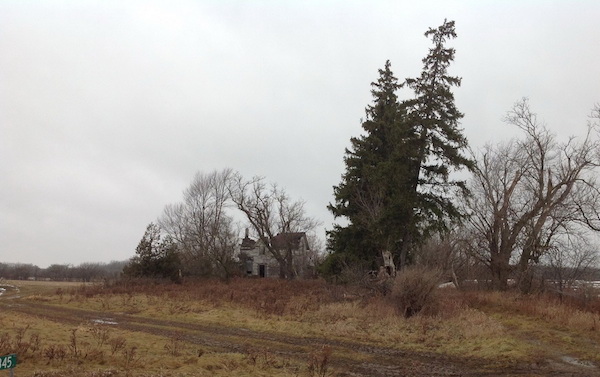
This trend to bigness has been promoted enthusiastically by government at both state and provincial and federal levels, and by agricultural schools. The modernizing mantra is “efficiency,” but its calculation has often been skewed, not taking into account the future cost of depending on cheaply-priced, non-renewable resources for water, fuel, and fertilizer. Technology multiplies the power of a farmer’s effort, but mining the soil and draining aquifers undermines its future promise. New pesticides and genetically-modified (and proprietary) seed stocks, packaged together in off-the-shelf production and management systems, may already be running up against limits to increasing profitability and to their ability to sidestep natural processes of resistance and exhaustion. In both corporate laboratories and also government and university research stations (often now re-purposed to provide taxpayer-funded services to corporations and commodity-producer lobbies), the gods of innovation promise future miracles. But like the god of the gaps derided by philosophers, their room to maneuver may be shrinking.
I describe the results of this trend in pretty stark terms. Some readers may judge that the description tips into caricature, and point out exceptions to it, even within what is often called “industrial” agriculture. And there are exceptions, as I will acknowledge. But to make the larger point, it can help to suspend the qualifications for a paragraph or several. There’s a problem we need to see here. Hang on to the handrails for a bit of a rough ride.
Modern, technologically-enhanced farming operations tend to treat land as an open-air production floor on which efficiencies are measured to the inch by GPS, and to the penny by accounting programs. The floor-space itself has commercial value, affected by things such as drought and capital migration. Large investment funds now buy up agricultural land internationally. Land can be a decent parking-place for surplus international capital, and even for cash hedged by kleptocrats against political instability elsewhere. Big money moving into North American agriculture can also be associated with a new type of farming: the harvesting of lucrative crops of subsidies and write-offs.
Along with money, farming operations themselves can and do migrate with the price of land. Some have effectively abandoned a land base: feedlots and large dairy operations can operate entirely on trucked-in feed and trucked-out waste, “unbundling” and contracting-out the organic cycle of food production on a massive scale.
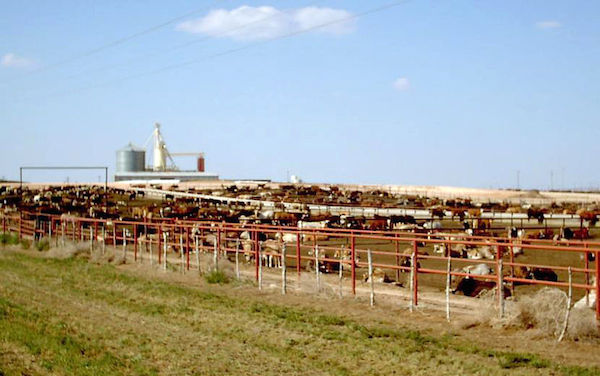
Defenders of technologically-enhanced, large-scale agricultural commodity production will argue that the above description of their industry does not take into account two important developments that are tilting it toward a reduced environmental impact and increased sustainability. These are, first, highly-sophisticated and integrated production, pest-management and waste-management systems, and second, “precision agriculture,” which relies on GIS, GPS, remote sensing and similar technologies to monitor and measure soil inputs and outputs at a micro level. These systems do work and can have beneficent effects. And perhaps more important, discussion of them may encourage dialogue between two sides of agriculture (small-scale, local, or urban farming, and large-scale commodity production) that have not talked much in recent years.
But all the innovation in the world cannot protect even the biggest and most technologically-armored agricultural Humptys from bad economic falls. Innovation eats its own; one competitor leapfrogs another, and an outbreak of disease, bad weather, or drought can betray hidden weaknesses even in those operations which seem strongest. Banding together helps, but a new philosophy now drives it: the co-operative and farmers’ movements of the first half of the last century have been replaced by commercial producer lobbies.
Insecurity also feeds the hunger of the agricultural sector for subsidies, hidden or otherwise, and drives a tendency, especially when commodity prices move up temporarily, to place every inch of land under production, butting up and on to road allowances, bulldozing brush, draining wetlands. It also brightens the allure of an export-oriented agriculture feeding global commodity markets for carbohydrates, proteins, fiber, fats and other elements demanded by industrial processors. Insecurity also means that every minute counts, not just because of the vagaries of weather, but also for relentless cost-control.
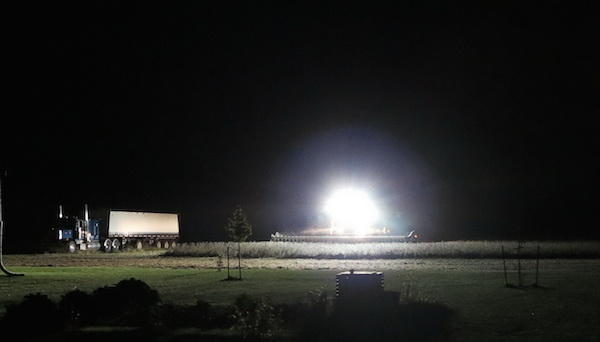
Today’s producer groups speak in grave tones about a responsibility to “feed the world,” but the large modern farm is first and foremost dedicated to the production of what Marx called “exchange value,” realized by the sale of commodities. However, the more efficient it becomes in technological terms, the more inefficient it is as a long-term value-production machine. It is propped up in the shorter term (which may last decades) by an increase in operational scale, by direct and indirect subsidies, and by using up economic “rents” in the form of non-renewable resources. Like those resources, the subsidy tap can also run dry, squeezed by unsustainable government debt and by taxpayer resistance.
What this model of agriculture has forsaken, historically, is society. The social space occupied by the great co-operatives of the middle of the 20th century has been hollowed out by their privatization or their failure. Those co-ops that persist on a large scale must play by the rules of the corporate economy and, at times, may also need to curry political favor to protect their enabling legislation. A canyon has opened in the past century between food producers and consumers. Advertising, public-relations, and head-shaking about consumer ignorance or environmentalist and animal-rights “fanatics” do not bridge it from the industry side. Nor do distrust, conspiracy theories or price-hunting on the brow of the consumption cliff-face.
Production spaces, in a modern capitalist economy, are typically not community spaces. They are private property, and many elements of processes that take place within them are proprietary. Therefore, they must be protected from invasive harms to their value, and to the value they produce. Some of these harms are natural, like disease. Others are economic, like eminent-domain threats to private ownership of land, or the illegal appropriation of patents and genetic data. Protection against them involves closing the farm gate—figuratively and literally, vetting visitors, disinfecting clothing and shoes, checking agendas, itineraries, affiliations, and backgrounds. Casual visiting comes to be seen as a potential vector of disease, agro-terrorism, or theft. Community, a social form and a value once embedded in a distinctive rural intellectual culture is now re-inscribed as if it were a culture for pathogens.
The larger the scale of production, the harder it becomes to access its operations from outside, and the less there is a social incentive to do so. A long-term trend toward larger units of production more reliant on technology has progressively depopulated the countryside over the past century or more. Vast, empty tracts of land are a built-in discouragement of visitation, except, perhaps, of the surreptitious or the lost kind. It is a historical irony that in my discipline, cultural sociology, increasing emphasis is (rightly) being placed on the need to understand the damaging legacies of “settler” culture precisely at a time when rural North America is in a half-century-long process of unsettling, to use Wendell Berry’s apt term. What’s left behind in this new, rationalized landscape are small memorials: school and church plaques, for example. Newer installations sometimes refer generically to a “heritage,” as Roger Epp notes:
The world-class terminal, meanwhile, signifies a response to the dictates of competitiveness in a global economy. Its name—Legacy Junction—is intended to evoke sentimentality, but only that, for places left behind in the march of progress.
The cognitive training delivered by such messages operates in contemporary rural communities, undermining independent political thought and action. Sentimentality about the past barely masks a contempt for it. The future is something to be embraced, but as an anonymous, machine-like imperative. This is represented in empty phrases like “market-driven efficiencies through innovation” and by governments that Epp describes as “centralized, leader-dominated, managerial, and technocratic.”
To focus the picture painted above, let’s look briefly at the work and legacy of one of its central characters: Earl Butz, tagged as “King Corn,” who served as Secretary of Agriculture in the Nixon administration. We’ll begin, somewhat oddly perhaps, with a couple of stanzas from a Robert Penn Warren poem:
The ivy assaults the wall. The ivy
says “I will pull you down.” Time
is nothing to the ivy. The ivy
Does not sweat at night, for like the sea
it dreams a single dream, it
is its own dream. . . .
Butz did not dream of peace and, unlike the ivy, he did not proceed anonymously or quietly. He was a man in a hurry to the future. But he was possessed implacably by one dream; he was his dream. Like my childhood notion that the small, tight slopes and hollows of my rural setting spoke of more dramatic heights, Butz countered reality with a vision. A child of the Great Depression, he sought to ensure that the agricultural slough of despond it created would be bulldozed into ever-ascending economic heights. The path he laid out toward those heights was scraped clean by a denial that other ways to address economic insecurity existed, including those that sprang, at least in part, out of an agrarian culture nurtured on plains soil.
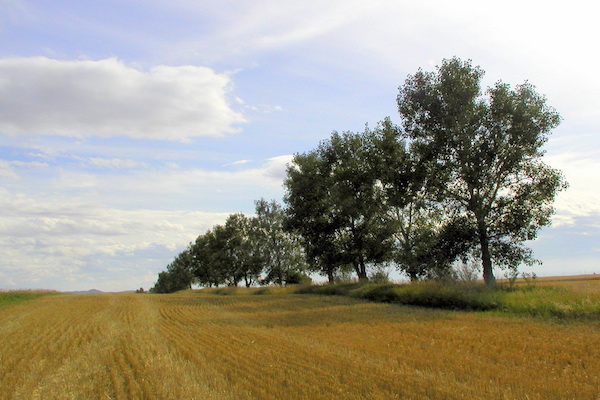
Butz’s vision of the future was trinitarian. From Productivity would issue forth a son, Prosperity, who would leave a legacy of Plenty by defeating the deviltry of The New Deal. Agricultural pilgrims would take a new road to salvation; not the arduous paths of traditionalism or habit or, worst of all, supply-management, but a broad highway paved by technology and subsidies and leading straight to a single point on the horizon: all-out production of a few export commodities amenable to industrial processing by large agribusiness firms. Butz exhorted farmers to “plant fence row to fence row,” and his mantra, “get big or get out!” echoed throughout North America.
Tom Philpott tells the rest of the story succinctly:
Urged on by Butz and buoyed by high grain prices, millions of Midwestern farmers spent the 1970s taking on debt to buy more land, bigger and more complicated machines, new seed varieties, more fertilizers and pesticides, and generally producing as much as they possibly could.
Then, in the 1980s, the bubble burst. By that time, farms were cranking out much more than the market could bear, and prices fell accordingly. Meanwhile, interest rates had spiked, making all of those loans farmers had taken out in the 70s into a paralyzing burden. Farm incomes plunged and tens of thousands of farms went under. Butz’s great policy change had given rise to the deepest rural crisis since the Depression.
Yet the food-production machine Butz created kept cranking. Surviving farms responded to low prices by planting more, hoping to make up on volume what they were losing on price. Failed farms got folded into larger operations at cut-rate prices. Throughout the Grain Belt, abandoned farmhouses were burned to the ground, cleared, and incorporated into ever-larger corn and soy fields. . . .
As I write this article, Saudi Arabia has plunged my country, and especially my province, into deep economic and political uncertainty by adopting a kind of Butzian approach to oil production. The Saudis have refused to limit their production, forcing the world’s other oil producers to accept drastically lower prices. For several weeks after, producers responded to the oil glut by producing even more oil than before, further forcing down prices.
Incidentally, this threatens the oil and gas boom in the Bakken Shale fields of North Dakota and Montana, which were still being developed pell-mell when I wrote about them a column or two ago.
For the most part, farmers and agricultural organizations did not respond to the rural crisis of the 1990s by returning to homegrown legacies of co-operativism and community regeneration, aside from temporary and emergency measures. If anything, the more they are threatened by market trends, the more wedded many farmers have become to a market-driven view of the world. They still repeat the old adage that “farming isn’t just a way of making a living; it’s a way of life,” but the game they are in now goes well beyond making a living, and hitches them ever more intimately to giant corporate suppliers and buyers—in some cases, the same company.
There are historical roots to this expansive business mind-set: as I noted in an earlier column, 19th-century “pioneers” could be rabidly cash-oriented and improvement-hungry. The agrarian movements of the last century promoted an openness to technological and economic innovation as a route to middle-class respectability. Not only could farmers boost productivity and reduce “drudgery”; they could also thereby destroy an urban prejudice that rural folk were crude and backward.
But adherence to technology-driven and market-based “solutions” is also encouraged now by a sense that there is no other route to viability than large-scale, export-oriented production, combined (when needed) with subsidies and targeted, punitive restrictions on imports from foreign upstarts.
This does not simply reflect a human impulse to cling more tightly to ideas and practices the more plainly they are discredited. It is also the consequence of more than four decades of official and intensive instruction. It may also, in some cases, be a consequence of present-day dependency; precisely what Butz railed against in characterizing the Roosevelt-era supply-management system as “socialist.”
Ironically, certain agricultural supports such as grants or write-offs against weather or pest-related production losses can encourage the odd politically-connected entrepreneur to look for opportunities to earn money by not producing—precisely the Rooseveltian consequence so abhorrent to Butz.
Instruction in marketized self-interest and corporate agriculture also had a consumer counterpart. Urbanites were encouraged to see the food supply through the lens of cheapness, standardization, and safety, all provided and safeguarded by producer lobbies and agribusiness.
Traditionally a vehicle of community and conviviality, food is marketed ever more intensively as an object of privatized and individualized consumption, and price competition. Today’s producer and processor organizations decry the consumer’s stubborn conviction that “cheap food” is a right, but it is the Butz revolution that fuelled that conviction. The processed-food industry itself endeavors to make its products appear affordable (while still being healthy profit vehicles) and attractive, without drawing undue interest to the circumstances of their production. And the hollowing-out of North American heavy industry and the middle-class lifestyle it once supported has made of the cheap-food conviction a desperate necessity.
Tom Philpott again:
While farmers scrambled to “get big or get out,” Butz’s beloved agribusiness giants cheered. Regaled with mountains of cut-rate corn, Archer Daniels Midland used its political muscle to rig up lucrative markets for high-fructose syrup and ethanol. In Iowa, bin-busting harvests gave rise to an explosion of massive concentrated-animal feedlot operations (CAFOs). An increasingly consolidated meat industry learned to transform cheap grain into cheap—but highly profitable—burgers, chops, and chicken nuggets.
What have dreams of bigness and profit, fuelled by cheap oil and chemicals, made of the plains?
Many things.
On the positive side, a prodigious arena of production. On the negative, a vast, horizontal food factory. A surface defined by an input-output philosophy applied to an ever-thinning seedbed threatened by salination. A fading notion of soil as an ecology or a focus of stewardship. Waterways and fish habitat affected by phosphorus and nitrogen pollution. Thinly-inhabited spaces punctuated by abandoned processing plants, mines, oil and gas installations, empty townsites, impoverished Indian reservations, and rural ghettos. A landscape raked by unpredictably violent storms, baked by longer and more intense droughts, and inundated by larger and more arbitrary floods. An underworld of drying aquifers and legacy fracking chemicals. A society of dismantled public services and crumbling community infrastructures, dependent on fewer, larger and more distant urban centers. A sky silenced of songbirds. Parks, common lands and sanctuaries governed and hemmed in by the dictates of revenue-generation. A world in which native prairie, native peoples, and native flora and fauna inhabit the least portion of the land they once defined.
A world also, in which dreams ossify into rigid fundamentalisms, grasped ever more desperately.
A world in which points of light signify the remnants of an oil boom gone sour.
A world in which much of what I’ve written about here and over the past four columns is regularly and routinely ignored or denied.
What of its future?
In my final column of this series, I will sound a more hopeful note. In so doing, I will try not to ally aspiration to denial, as I once did as a child, disdainful of the ordinariness of flat land. Or as Butz did, seeing hope in technological and economic hubris. Or as do those of my agriculturalist fellow-citizens who disdain as foreign matter the views of climate scientists, environmentalists, and food-system critics living among and near them, listening instead to other, discredited but persistent voices.
But this hopeful ending will be a return to small things. I have no “save the world” answers. I live in Feedlot Alley, not Silicon Valley. I doubt that any of my columns will ever be the basis of a TED talk. But I do think that the small initiatives I will describe, the networks of small actions and ideas that have been sustained, threadlike, over decades, or recollected from archives and memories, or made anew, have a potential to coalesce into something much larger and more powerful than its components. Something of a dream to be realized, but in the form of a collective and variegated collage of visions; a mutual work of political and practical art, undertaken close to the ground, and close—as close as we can get—to each other.

Notes on Sources
The story of Tom Sukanen and his Prairie-stranded ship has been told, retold and adapted in film, theater and literature. A photo of the ship in its present state (it’s now part of an open-air museum), and a succinct biography of its builder may be found in Sumitra, “Tom Sukanen—The Man Who Built a Ship in the Middle of the Canadian Prairie,” Odditycentral, 29 March 2013: http://www.odditycentral.com/news/tom-sukanen-the-man-who-built-a-ship-in-the-middle-of-the-canadian-prairie.html
On the “canyon” between food producers and consumers, and distrust of activists, see, for example, Daniel R. Pearce, “Ont. farmers develop security squad against animal activists,” Toronto Sun, 18 February 2014)
http://www.torontosun.com/2014/02/18/ont-farmers-develop-security-squad-against-animal-activists
On international capital and land investment, see, for example, Steve Ladurantaye, “Cheap Canadian farmland lures foreign buyers,” The Globe and Mail, 19 August 2009: http://www.theglobeandmail.com/globe-investor/investment-ideas/cheap-canadian-farmland-lures-foreign-buyers/article4282637/
The term “subsidy farming” refers to the active seeking-out, dependence on or manipulation of agricultural subsidy regimes.
Wendell Berry’s reference to “unsettling” comes from Berry, The Unsettling of America: Culture and Agriculture, Sierra Club Books, 2004.
Roger Epp’s references to “Legacy Junction” and technocratic government both occur on page 303 of Epp, “The Political De-skilling of Rural Communities,” in R. Epp and D. Whitson, eds., Writing Off the Rural West, University of Alberta Press, 2001.
Robert Penn Warren’s poem “The Ivy” may be found in The Collected Poems of Robert Penn Warren, Louisiana State University Press, 1998, page 231.
On Earl Butz as “King Corn,” see Curt Ellis, “Meeting King Corn: Earl Butz was a product of his time” Culinate, February 19, 2008: http://www.culinate.com/articles/opinion/meeting_king_corn
The story of Earl Butz, as told by Tom Philpott, comes from Philpott, “A reflection on the lasting legacy of 1970s USDA Secretary Earl Butz,” Grist, 8 February 2008: http://grist.org/article/the-butz-stops-here/
The story of Canadian agriculture and food processing roughly parallels that in the United States. It is told in Anthony Winson’s The Intimate Commodity: Food and the Development of the Canadian Agro-Industrial Complex, Garamond Press, 1993. Winson also takes a critical view of the international food system in his 2014 book, The Industrial Diet: The Degradation of Food and the Struggle for Healthy Eating, UBC Press, 2014.
On precision farming, see an early but still useful article by R. Mack Strickland, Daniel R. Ess and Samuel D. Parsons, “Precision Farming and Precision Pest Management: The Power of New Crop Production Technologies, Journal of Nematology 30(4):431-435, 1998: http://www.ncbi.nlm.nih.gov/pmc/articles/PMC2620313/pdf/431.pdf
On the threat to the Bakken field posed by the 2014-2015 oil price crash, see, for example, Andy Tully, “US Oil Rig Numbers Plunge, Especially In Bakken,” Oilprice, 26 January 2015:
On drought, see Darryl Fears, “Three-decade ‘megadrought’ forecast for Southwest,” Chicago Tribune, 13 February 2015: http://www.chicagotribune.com/news/nationworld/chi-mega-drought-20150213-story.html
On flooding, see, for example, Wikipedia, “2013 Alberta Floods”: http://en.wikipedia.org/wiki/2013_Alberta_floods
For an example of attention paid within the agricultural sector to discredited voices on climate change, see Harry Siemens, “Dr. Tim Ball On Climate Change,” SiemensSays.com via Farms.com: http://www.farms.com/expertscommentary/siemenssays-com-video-dr-tim-ball-on-climate-change-86805.aspx
See also “Timothy F. Ball (Tim Ball),” at Desmogblog.com: http://www.desmogblog.com/timothy-f-ball-tim-ball
And the Calgary Herald’s Statement of Defence against a lawsuit launched by Ball against the Herald and University of Lethbridge professor Dan Johnson (Ball later withdrew the suit): http://www.desmogblog.com/sites/beta.desmogblog.com/files/Calgary%20Herald%20Statement%20of%20Defence.pdf
And finally, for a somewhat less partisan and more philosophical overview of themes I have touched on here, see my article, “Complicating Food Security: Definitions, discourses, commitments,” in Canadian Studies in Population, 41(3-4), 2014: http://ejournals.library.ualberta.ca/index.php/csp/article/view/18575/17718

Photo Credits
Photo 1: by Cephas (Simon Pierre Barrette) on Wikipedia http://upload.wikimedia.org/wikipedia/commons/7/7b/Anser_caerulescens_CT8_-crop.jpg
licensed under Creative Commons Attribution-Share Alike License; Photo 2: courtesy of Phyllis and Bradley Rawlings; Photo 3: by Debby Gregorash, used by permission; Photo 4: by Debby Gregorash, used by permission; Photo 5: by the author; Photo 6: by H20, licensed under Creative Commons Attribution-Share Alike 3.0 Unported license http://commons.wikimedia.org/wiki/File:Feedlot-1.jpg; Photo 7: courtesy of Phyllis Rawlings; Photo 8: by Debby Gregorash, used by permission;
